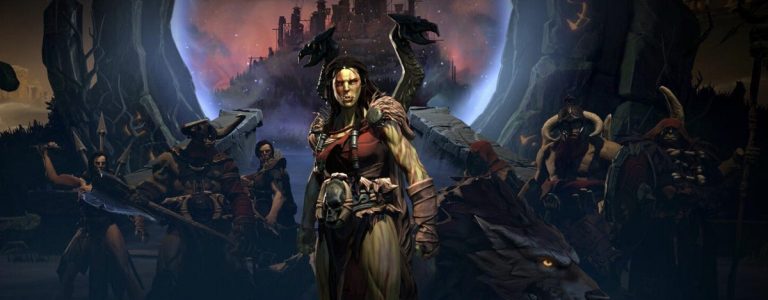– it looks fantastic. The living manga designs, technicolour-skied maps, glorious cartoon explosions, and endlessly stylish animations are beautiful, made more impressive because they’re contained on the relatively underpowered Switch. But they’re draped like a costume over the body of a game that pays homage to the golden age of Japanese mech shooters, particularly early Armored Core (whose producer, Kenichiro Tsukuda, has moved to publisher Marvelous and helms this project). At its best, Daemon X Machina is an exercise in rose-tinted nostalgia, a gorgeous update to a much-missed genre. But at its worst, those good looks feel less like a costume and more like a mask for a game that isn’t quite as well thought-out as it appears.Like Armored Core, Daemon X Machina has a 1-2 rhythm, constantly bouncing between short, destructive missions and quiet moments where you’ll make use of the funds and equipment you’ve earned to improve for the next one. This is a decidedly old-school proposition: where customisation will likely take as long as those missions; where lists of stats run over multiple pages; where you’ll agonise over paint jobs and decals for no reason other than personal satisfaction (helped by the fact that your mech is displayed with perfect selfie lighting in the hub hangar at all times). Those looking for a throwback will feel right at home from the get-go.
Once you finally decide that your mech – or Arsenal, as it’s called here – is ready for combat, you’ll find that Daemon X Machina handles just right too, its walking tanks managing to communicate both physical heft and the freedom of high-speed flight. It’s genuinely a little uncanny how natural it felt to play after years away from similar games (although I’d recommend a Pro Controller over fiddly Joy-Con button stabbing).
Weaponry is stupidly plentiful, allowing you to take six weapons of many and varied types into battle, using four of them at any one time. It’s a horribly rare joy to be able to simultaneously fire a machine gun, a bazooka, and a grenade launcher while waiting to charge up a railgun so powerful you have to plant yourself in the ground to even let it rip – it feels as good, and as silly, as you’d hope it would.
Most importantly for a mech game, Daemon X Machina deftly manages the interplay between your customisation choices and the act of playing. Despite the incredibly granular approach to equipment stats, you can immediately feel the difference between loadouts. One set might improve speed on the ground but have you flying with the speed of a drunk bumblebee. Another might allow for high speed boosts at the cost of a stamina bar that depletes just as fast. You can easily build around weapon loadouts, whether that’s an all-melee, hyper-fast samurai machine, or a rocket-spewing steel beast that might as well be a turret.
So yes, Daemon X Machina is a successful recreation of Armored Core’s, er, core, rekindling the mechanic-like thrill of piecing together a war machine that feels truly yours. But there’s a fairly huge problem at the heart of all this: none of this hard work really matters.
To get a taste of what the action entails, check out the Daemon X Machina’s first mission in the video below:

Machine-Like
While the developer has clearly put a great deal of thought into the framework of Daemon X Machina, the same can’t be said for the meat of the game itself. Progress just an hour or two into the campaign and you’ll have experienced most of what it has to offer over its 15 hour length. The story places you as a mercenary just doing their job, taking missions as they come – I just wish it didn’t feel so much like a job to play.
Missions almost never deviate from “destroy X things” or “stop thing from being destroyed” structures. Standard enemies – tanks, drones, and the like – are little more than cannon fodder, just UI dust to be explosively swept away. Opposing Arsenals with their own specialised loadouts should be the main attraction, but enemy AI is poor enough as to make most encounters a game of violent cat-and-mouse, essentially forcing you chase a slowly depleting health bar around the map.
Incidentally, at time of writing, I haven’t been able to play in multiplayer (both online and local wireless are supported), but Daemon X Machina only features co-op options. The absence of a PvP mode at launch seems like a misstep – pitting your Arsenal against actual inventive humans would at least mitigate that single-player disappointment a little.
“
To its credit, boss fights against colossal enemies – from a spider-like ‘Gunfort’ to a possessed piece of mining equipment – are almost all fantastic, offering a much-needed dose of pattern learning, action game reflexes, and spectacle. But there are so few peppered among your grindingly humdrum mercenary day job that they feel more like respite than reward.
The upshot is that any work you put into making your perfect Arsenal feels basically cosmetic – unless you truly screw up, you’ll almost never need to think about your loadout, or apply any kind of thinking about how to tackle a situation beyond “blow up anything marked in orange or red”. This could have been fun enough – I’m a fan of mindless destruction in almost any virtual form – if it wasn’t for the story getting in the way.
Cut A Long Story Short
The moon of Daemon X Machina’s world has fractured and crashed into humanity’s home, splintering society. In the aftermath, there’s a plague of problems: warring consortiums trying to claim Femto, a new and dangerous energy source brought planet-side by the cataclysm; corrupted AI armies attempting to wipe out their creators; a stirring evil, perhaps orchestrating all of the above. Sadly, it’s all set-up, little pay-off. Your character’s story is told in fragments of text and cutscene as they join a world of mech-piloting mercs, each with a more one-dimensional personality than the last.
I know some are ready to tell me that I shouldn’t really care about the story in a mech game – the issue is that Daemon X Machina really wants you to care. Missions are regularly interrupted for long streams of meaningless, cliched banter between characters you haven’t spent nearly enough time with to actually like. Most of the inciting action takes place offscreen, making it almost comically difficult to work out what the hell is going on, or who anyone actually is.
“
Worse, it spills into how missions play out. I regularly ran into moments where I could inexplicably no longer damage an enemy (while they could still damage me), only to realise that it was because the dialogue hadn’t caught up with the action, and we were just waiting for a cutscene to kick in. One mission’s entire interactive section involves getting out of your mech to walk forward several steps, watching a cutscene, and being kicked back to the hub again.
All of these problems are annoyances rather than breakages, but the cumulative effect of flat missions and constant interruptions wore me down. It feels a little like the developer spent so long (successfully) trying to recreate the shape of games-gone-by that it didn’t make much of the actual game to go with it, choosing padding over product.

























